Last year I wrote a blog detailing the University of Washington team’s Surface Salinity Profiler so I will not repeat myself here. The primary function of this instrument (towed outboard of the ship’s wake) is to gather detailed information on the temperature, salinity, and turbulence structure in the upper meter of the ocean. This is notoriously (for oceanographers) difficult to do directly from the ship because the ship mixes up the water immediately around it.
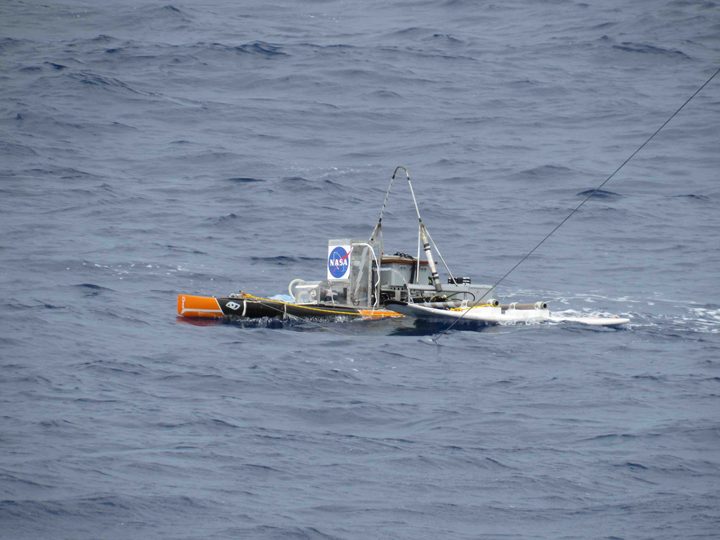
The Surface Salinity Profiler is towed outboard of ship wake using a special bridle.
The SSP is basically a re-purposed paddle board with an outrigger (surfboard) and a keel bristling with instruments. It looks a bit like a Frankenstein monster from a beach town surplus yard, but in actuality is a engineering marvel perfect for gathering data in the upper meter of the ocean.
In the year since we last deployed the SSP, more instruments have been added to improve its capability. It now has its own current profiler and improved turbulence (microstructure measurement) capability.
The SSP caused some heartache for a few days because of water leaking into the box containing the onboard computer. It is amazing to see the talent of many hands solving the problem. The box was completely disassembled, waterproofed, and reassembled (better than before) in less than 24 hours. Problem solved. It was a stroke of luck that the computer survived the moisture insult. However, the wifi capability from the SSP to the ship was lost, but that is not essential for successful data collection.
So, what is so important about gathering data in the upper meter of the ocean? This is where we find find buoyant freshwater from rainfall before it mixes down into the water column. Large areas of the tropical ocean have significant freshwater input. When seen from space these areas look very fresh – and no one suspected salinities so low because almost all other methods of profiling salinity in the tropics miss the upper few meters of the ocean. So, with SPURS-2 and SSP we get to resolve the apparent differences between what we see from space and what oceanographers “thought they saw” for decades. Both observations are correct – traditional oceanography had just missed the fresh layer close to the ocean surface! That puzzle is now solved and as science always does, it is now a matter of digging into the details! How does the freshwater from rain mix into the ocean. Does rain itself increase mixing or decrease mixing (oceanographers are hotly debating that question!)?
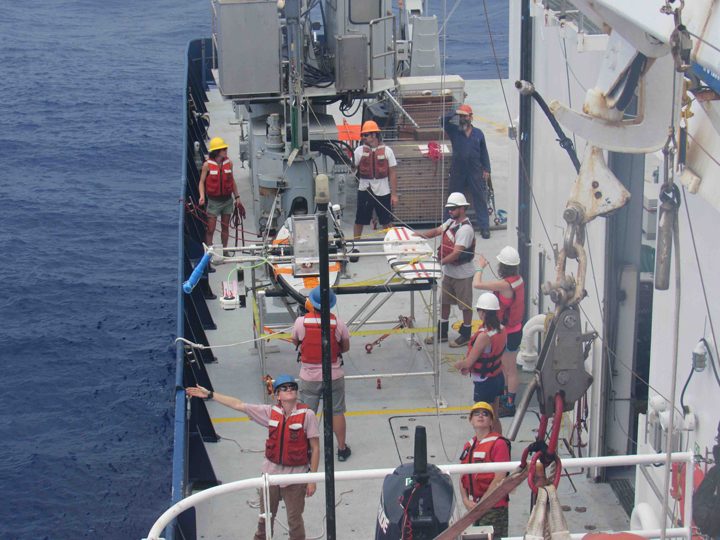
The SSP team preparing to launch the Sea Surface Profiler.
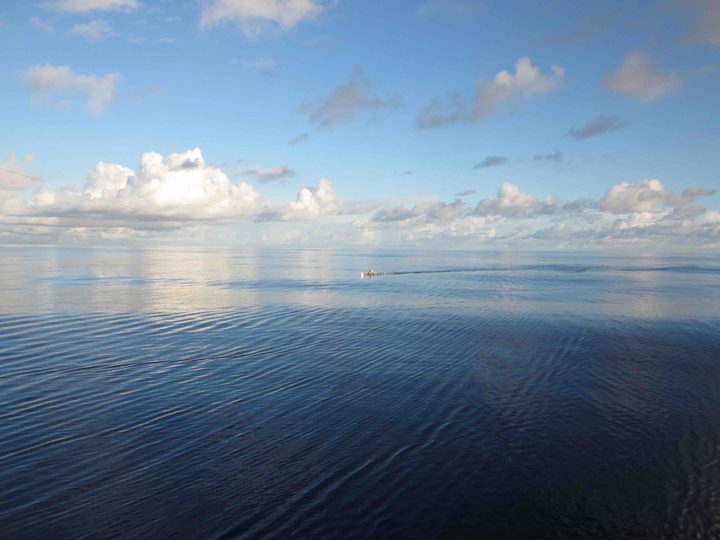
The SSP in calm sea – far from ship during full deployment.
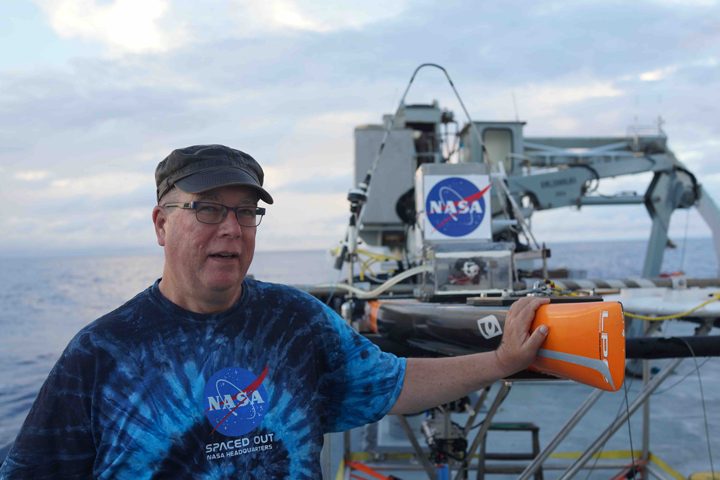
Eric Lindstrom with the Surface Salinity Profiler. Photo by David Ho.
Along with SSP, we profile salinity in the upper 500 m of the ocean about every 30 minutes using an Underway Conductivity, Temperature, and Depth (UCTD) profiler that can be deployed from the moving ship (and is) whether SSP is deployed or not. That instrument gives us the “traditional” large-scale view of the temperature and salinity field (salinity is derived by a formula from the conductivity and temperature of the water).
The are also a couple of thermosalinograph (TSG) systems built into the bow of the Revelle. They provide continuous data on temperature and salinity from water intakes at 2, 3, and 5 m depths.
Overall, there is much “integration” of various data sets required to assemble the full picture of salinity in the upper 5 meters of the ocean – using SSP, the salinity snake, thermosalinographs, UCTD, and detailed rainfall maps (future blog!). SSP plays the central role in untangling the physics of rain, ocean mixing, and salinity stratification.
Meanwhile, the egret pair appears to have adapted to life on Revelle.
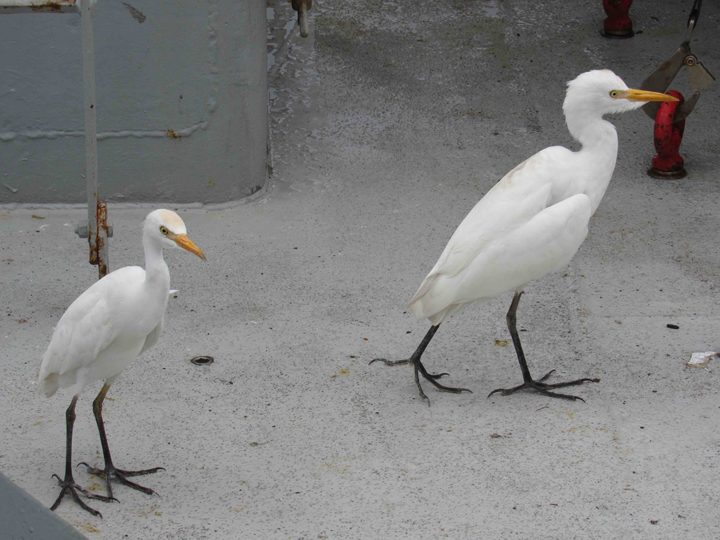
The egret pair has adapted to life on Revelle.
Tags: ocean salinity, oceanography, SPURS, SPURS2




Am so enjoying following this blog. Thank you very much!
Dear Madelyn,
Thanks so much for the comment!
Regards
Eric